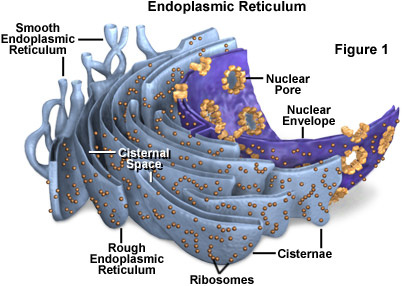The yin and yang of mitochondrial dysfunction
Mitochondrial dysfunction is a hallmark of organismal ageing, but mild mitochondrial stress during development is also known to have beneficial effects, delaying the ageing process. This positive effect on lifespan has been linked to the activation of the mitochondrial unfolded protein response (UPRmt), which is a stress response that leads to the transcriptional activa…

http://www.nature.co...rm.2016.71.html
http://www.readcube....038/nrm.2016.71
Bryan, what do you think they means by :
Muscle stem cell numbers and regenerative capacity were substantially increased following NR treatment, which, as shown by reduced expression of senescence and apoptosis markers, protected cells against intrinsic cell senescence. This inhibition of senescence was associated with improved mitochondrial biogenesis and function (with increased OXPHOS).
Does this means it removed the P16 positive cells ??
Kim Baumann's article was a simple recap of some of the latest research we've posted. See "Vitamin stops the aging process of organs Nicotinamide riboside rejuvenates stem cells, allowing better regeneration processes in aged mice" Keeping our stem cell reserves healthy with (NR) helps them repair and remain viable over more cell divisions (more than untreated cells) before reaching senescence. For those not so well versed I'm talking about the Hayflick limit. This phenomenon is the number of times a normal human cell population will divide until cell division stops.
You are asking specifically about p16 which is a cyclin-dependent kinase inhibitor and a tumor suppressor. Very possibly but I haven't researched this facet. It is part of cell cycle regulation but you're leaping past a lot of supporting cell metabolism to make this association. I think the understanding of whats happening is much further upstream and if p16 is involved its the result of restored metabolism.
We already knew NR treatment was likely to reduce the expression of senescence and apoptosis markers. All we have to do is look to some of the other NAD+ precursors which have also shown similar promise.
Nicotinamide Exerts Antioxidative Effects on Senescent Cells
Nicotinamide Overcomes Pluripotency Deficits and Reprogramming Barriers
So why might (NR) allow more stem cell divisions . . . and are there any other examples of this?
As a matter of fact all we have to do is look to the research Brenner did on yeast. This is all wrapped up in the discovery of (NR). Let's think for a moment where our (NR) comes from? Yeast . . . how is this?
As we look at the patents and the supporting research used to produce (NR) we find the (NR) we take is generated from a natural communal cell process that has been modified and exploited for our benefit. The initial research suggested the presence of (NR) in the conditioned growth media. These were followup experiments used to discover why sharing media from a previous yeast cultures increased the replicative life span of new colonies placed on that growth media. Then after a host of yeast strains were developed, blocking the production of or ability to utilize different NAD precursors, eventually strain PAB076 was developed that exports (NR) but cannot re-import it because that pathway was genetically blocked.
So why might the export of (NR) in cell communities be advantageous? Well its a "pay it forward" situation that helps fellow communal cells in stress. (that's my takeaway) It makes for a healthy community. In the case of yeast the number of budding cells increased over their replicative lifespan.
So the yeast replicative lifespan (RLS), experiments were produced for understanding the aging of dividing cells, defined as the number of divisions that a yeast mother cell undergoes prior to senescence and now it appears to have been conserved and passed down to us. Starting to sound familiar within the context of senescence?
Remember the post about NAD⁺-dependent enzymes at the endoplasmic reticulum.

This relates directly back to the research mentioned in Kim Baumann's article about the mitochondrial unfolded protein response (UPRmt). Think of the amount of downstream cellular damage depleted NAD+ levels from aging, injury or cellular stress might take place if its availability were limited to this organelle? Think how the mitochondria might be affected if this repair pathway were inhibited.

Mitochondria Retrograde Signaling and the UPRmt: Where Are We in Mammals? "In addition, boosting the NAD+ level not only activates Sirtuins and, especially, mitochondrial Sirtuin 3 [76], but also induces mitonuclear protein imbalances and activates UPRmt [67]. Importantly, these authors revealed that, in mice and C. elegans, in time-course experiments, treatments with nicotinamide riboside (NR), a NAD+ precursor led to a protective response in a two-step process. First, during the early phase response (one day of treatment), the UPRmt was activated, with the associated increase in ClpP and HSP6 expression. Then, after three days of treatment with NAD+ booster/NR, with the UPRmt markers still overexpressed, an antioxidant response was also triggered, as demonstrated by enhanced activation of the promoter of the gene encoding SOD3 and nuclear localization of the transcription factor daf-16 (FOXO3A orthologue in mammals). Interestingly, it appears that both pathways might be interconnected; the induction of Extracellular superoxide dismutase [Cu/Zn] (SOD3) was dependent on UBL-5, a transcriptional regulator activated during the UPRmt [67]." and "Similar results were obtained when mitochondrial protein abundance was increased by either increasing the NAD+ concentration with two precursors of its synthesis (nicotinamide mononucleotide (NMN) "abbreviation correction mine" and nicotinamide riboside (NR)) known to trigger the expression of several nuclear gene encoding mitochondrial proteins in an NAD-dependent protein deacetylase Sirtuin-1 (SIRT1)-dependent manner [83] or by boosting mitochondrial biogenesis by mTOR inhibition with rapamycin [67]."
Also see: Eliciting the mitochondrial unfolded protein response by nicotinamide adenine dinucleotide repletion reverses fatty liver disease in mice "NAD+ Repletion Prompts Mitonuclear Protein Imbalance, Inducing the UPRmt Markers CLPP and HSP10 In Vivo, While Reducing Endoplasmic Reticulum Stress" We can put together an entire picture now how (NR) fits into this mitochondrial unfolded protein response (UPRmt) while at the same time reducing endoplasmic reticulum stress.
Most readers here understand the job of the endoplasmic reticulum but for those who don't, its involved in protein and lipid synthesis and when its not working efficiently the protein's manufactured can be somewhat degraded having downstream health ramifications. So its plausible degraded protein production would hasten senescence and increasing intracellular NAD concentrations would support healthy protein production and increase replicative lifespan.
All of this research re-enforces the notion that (NR) might be readily exported into the intracellular medium to assist injured or stressed tissues. Remember the post about In vivo Monitoring of Transcriptional Dynamics After Lower-Limb Muscle Injury Enables Quantitative Classification of Healing

It suggested the gene expression of Nicotinamide Riboside Kinase 2 after injury was the result of increased uptake of (NR).
So to me the inhibition of senescence in mammalian tissue isn't really a big surprise. I think we needn't look further than the Brenner research and we see the same increase in replicative lifespan but in yeast. I'm sure we could boil things down to different regulating proteins but the larger brush strokes suggest removing the NAD+ deficits gives rise to a healthier cellular environment and additional cell division. Its not a great leap to think Stem cells need increased metabolism to repair damaged tissue and older stem cells who might be closer to senescence might benefit and replicate longer before halting.
So I think the research is suggesting this conserved (NR) path we are exploiting has many downstream benefits. It appears to be a built in failsafe to help stressed or injured tissues and so far this premise is holding together. The studies above also infer the (NR) molecule itself might be involved in cellular stress signaling, ramping up metabolic repair mechanisms. It will be interesting to read the coming studies to see if this idea continues to be strengthened.
Edited by Bryan_S, 25 May 2016 - 06:37 PM.
mitochondrial unfolded protein response (UPRmt) addition


































 This topic is locked
This topic is locked





























